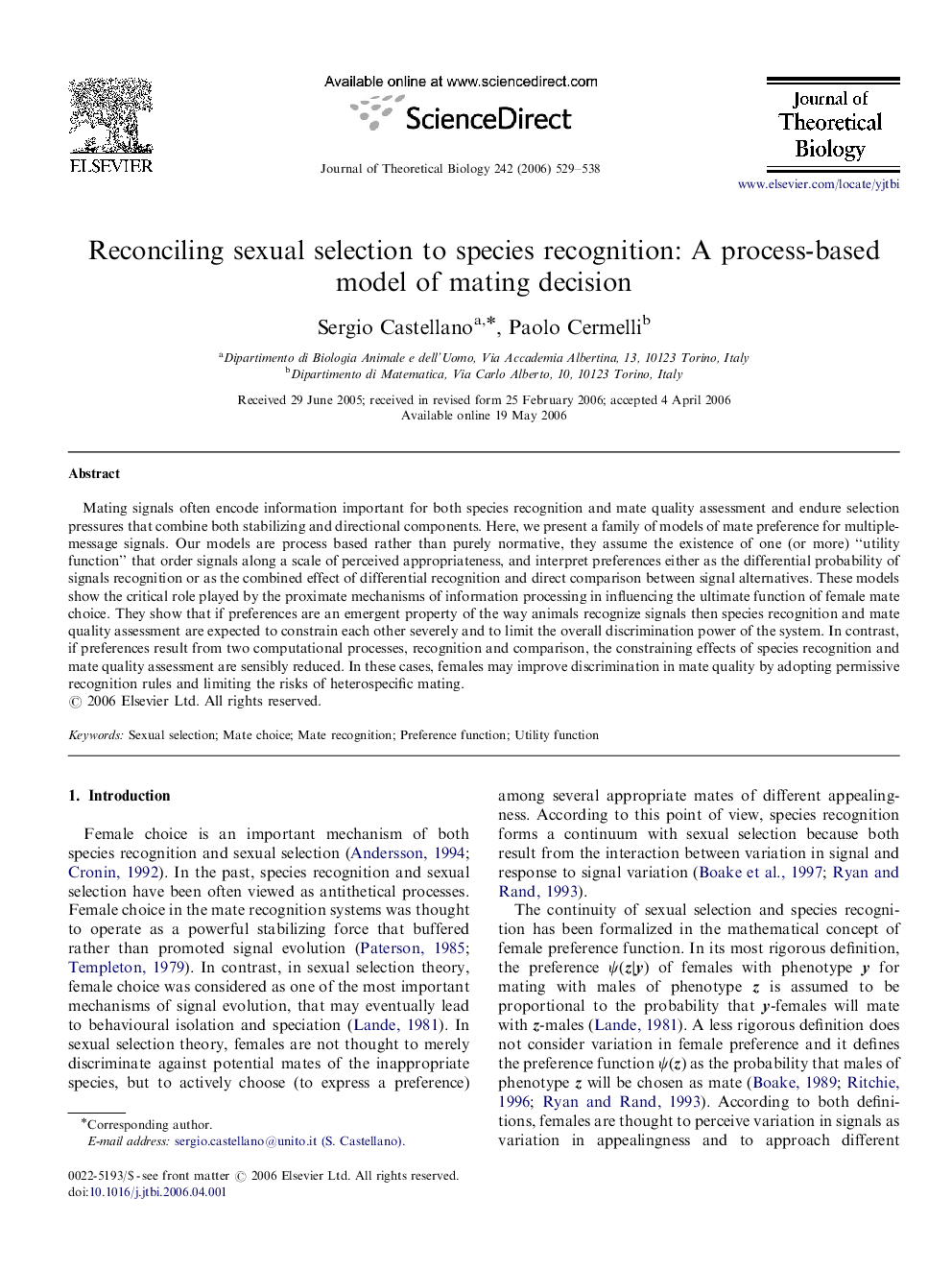| Article ID | Journal | Published Year | Pages | File Type |
|---|---|---|---|---|
| 6371720 | Journal of Theoretical Biology | 2006 | 10 Pages |
Abstract
Mating signals often encode information important for both species recognition and mate quality assessment and endure selection pressures that combine both stabilizing and directional components. Here, we present a family of models of mate preference for multiple-message signals. Our models are process based rather than purely normative, they assume the existence of one (or more) “utility function” that order signals along a scale of perceived appropriateness, and interpret preferences either as the differential probability of signals recognition or as the combined effect of differential recognition and direct comparison between signal alternatives. These models show the critical role played by the proximate mechanisms of information processing in influencing the ultimate function of female mate choice. They show that if preferences are an emergent property of the way animals recognize signals then species recognition and mate quality assessment are expected to constrain each other severely and to limit the overall discrimination power of the system. In contrast, if preferences result from two computational processes, recognition and comparison, the constraining effects of species recognition and mate quality assessment are sensibly reduced. In these cases, females may improve discrimination in mate quality by adopting permissive recognition rules and limiting the risks of heterospecific mating.
Related Topics
Life Sciences
Agricultural and Biological Sciences
Agricultural and Biological Sciences (General)
Authors
Sergio Castellano, Paolo Cermelli,
